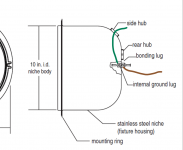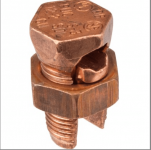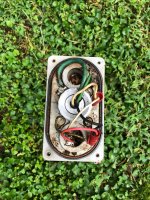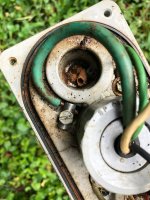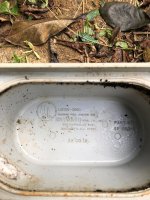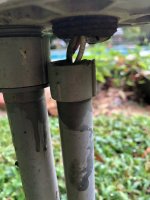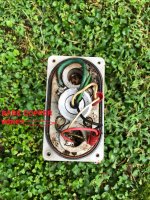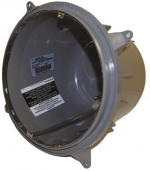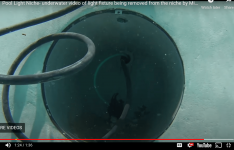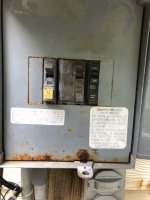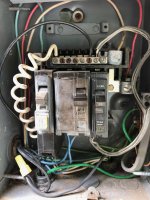That wire is not bare copper, it is a green insulated ground wire.
The junction box is not bonded and it does not need to be bonded.
The thick green wire at the top is a bonding jumper/ground, which is a ground that is connected to the internal lug in the niche, which is connected to the external bonding lug for the niche.
So, technically, it is bonded.
The light niche should be bonded from the back bond lug, which you can't see.
The niche serves as the water bond.
Below, you can see the bond wire.
Any external lug (left arrow) is a bond lug and it gets connected to the bond wire by a copper split bolt like at the right arrow.
If something comes with an external lug, bond it.
If it does not come with a lug, you do not need to bond it.
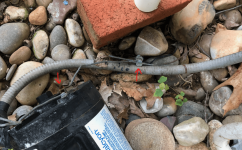
In the below picture the green line is the internal bonding jumper which is a #8 green insulated ground wire.
The brown line is a bare copper bond wire.
They both connect to the same lug assembly that goes through the niche.
So, the niche is double bonded.
